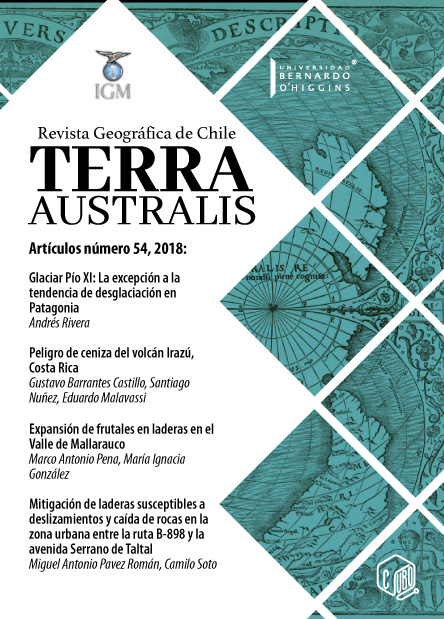Ash fallout hazard from Irazú volcano, Costa Rica
DOI:
https://doi.org/10.23854/07199562.2018541Barrantes13Keywords:
Caída de ceniza, Volcán Irazú, Simulación volcánicaAbstract
The eruptive period between 1963-1965 at Irazú volcano showed that Costa Rica is highly vulnerable to ash fallout. Ash was carried by wind currents to-wards the Great Metropolitan Area (GMA), southwest to the summit, which contains about 60% of the national population. Previous work on hazard as-sessment for ash fall at Irazú only estimate influence areas without detailing hazard levels based on the observed distribution of events between 1963-1965. These cartographic models are not suited for realistic risk estimation, informed land use planning or proper emergency management. In this paper, we used the computer code NG-TEPHRA for simulating ash fallout from Irazú volcano, as-sessing the associated volcanic hazard and developing an improved hazard map from ash fall by devising a hazard index that combines the spatial probabilities of relevant scenarios with estimates of deposited ash volumes. Previous simula-tions results from our group were already calibrated against observed historical and field (geological) data from the 1963-1965 eruptive period and were used for obtaining the final hazard map. Our results represent a contribution for land use planning and emergency management purposes based on the application of computer models and interdisciplinary research towards numerically informed hazard models.
Downloads
Downloads
Published
How to Cite
Issue
Section
License
Copyright notice:
Revista Geográfica de Chile Terra Australis retains the economic rights (copyright) of the works published in the Revista Geográfica de Chile Terra Australis. The reuse of the content is allowed under a license:
CC BY
Recognition

This license allows others to distribute, remix, tweak and build upon your work, even for commercial purposes, as long as you are acknowledged as the author of the original creation. This is the most helpful license offered. It is recommended for maximum dissemination and use of the materials subject to the license.








